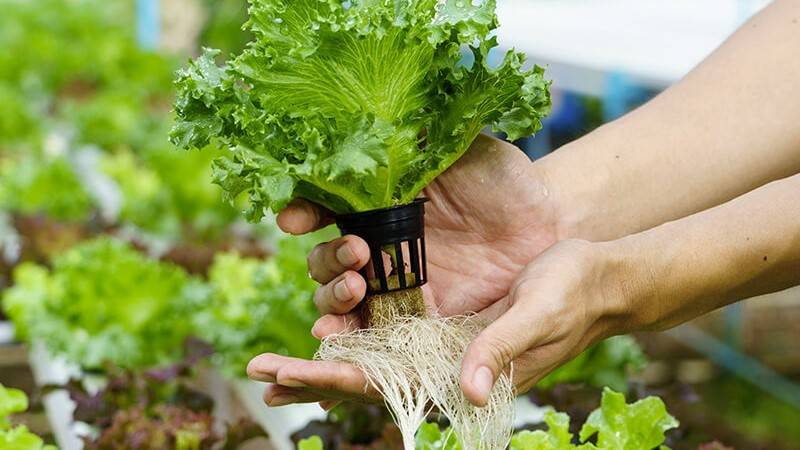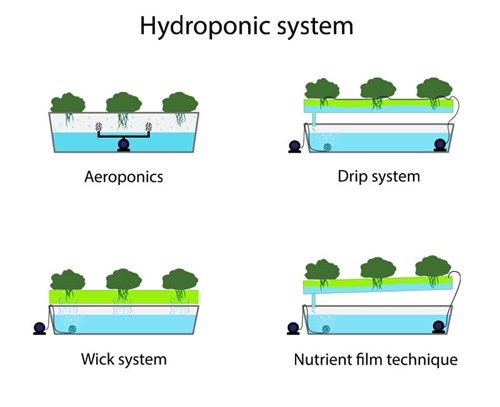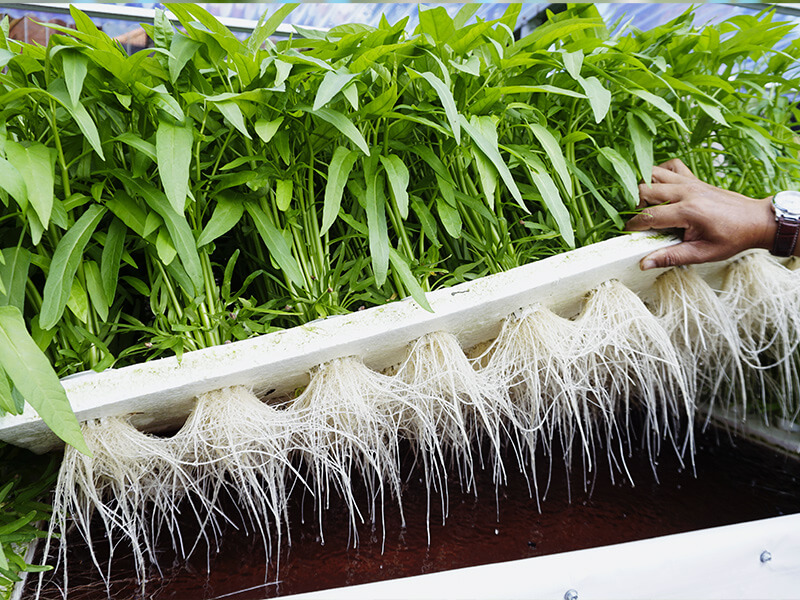What is Hydroponic Cultivation?


What is "Hydroponic"?
The short answer is… well it depends. The first written use of the word did not appear until a 1937 publication in Science by W.F. Gericke, in which Gericke coined the word “hydroponics” through the Greek language: “Hydro” meaning “water” + “Ponos” meaning “labor, toil”. Simply put: working with water. Still, there are ongoing debates as to what exactly constitutes hydroponics, as is the case with “water culture” vs. “soilless culture”.
By strict definition of the word, “water culture” is the only type of “true hydroponics”, in which an aqueous solution containing all essential nutrients is used to solely grow plants. However, a broader interpretation of the word leaves room for “soilless culture”, in which plants are cultivated using soilless media (Ex. peat-based, rockwool, coir, perlite, etc.) and supplied a water-nutrient solution. To make matters more confusing, many growers utilize hybrid systems that combine each of these definitions!
So, how exactly is it done, what plants are utilized, and more importantly, is it profitable?
Hydroponic System Types
Current hydroponic systems can be broken down into two distinct groups: systems that operate without media (“water culture”) and those that operate with it (“soilless culture”). Examples of “water culture” systems include nutrient film technique (NFT), deep water culture (DWC), and aeroponics. Conversely, examples of “soilless culture” systems include ebb and flow, wick systems, Dutch bucket, or bag culture.
Irrespective of system type, the basic principle behind each hydroponic system design is that an aqueous solution comprised of the right quantity of all essential nutrients needed for optimal plant growth is supplied to plants. This is achieved by utilizing either a static watering method, one in which plants sit in or on top of stationary water, or a moving watering method, one in which a continuous stream of water is supplied to plant roots and recirculated with a pump.

Growing Media Selection for Soilless Hydroponics
The best media to select for a “soilless” hydroponic system is one that has high air porosity, lower water retention, and good drainage. This is necessary to ensure that plants do not remain drenched for prolonged periods in pots. An excellent choice regarding PRO-MIX products would be PRO-MIX® HP growing medium, which features a high perlite to peat concentration designed to help hydroponic growers achieve the maximum results for their growing needs. Active Ingredients, such as BIOFUNGICIDE + MYCORRHIZAE, can be included to protect root systems from certain root diseases and improve nutrient uptake for enhanced plant growth.
Which Plants Can You Grow With a Hydroponic System?
Hydroponic systems can be used to grow a wide array of plants, such as vegetables, fruits, herbs, and even flowering plants. However, before plant selection takes place, it is important to first consider the respective system type that will be utilized to grow the plants!
In general, smaller vegetation is better suited for hydroponic systems unless paired with an overhead support system to support plants as they grow (ex. a trellis system). The most commonly grown hydroponic crops include lettuce, kale, basil, tomatoes, cucumbers, bell peppers, and strawberries.

Hydroponics Advantages
When it comes to growing hydroponically, these systems offer a variety of benefits over other plant production practices. Such benefits associated with hydroponic systems include higher rates of production, improved crop quality, lower water usage, reduced area required for production, and the potential for year-round production at just about any location. Thus, these systems can be quite profitable, making them desirable for both hobbyists and commercial growers alike!
Hydroponics Disadvantages
However, while there are many advantages to growing hydroponically, there are several distinct disadvantages. First, these systems require technical “know-how” to operate and can be expensive to set up, monitor, and maintain. Second, these systems are vulnerable to power outages and will require backup systems in case of emergency. Lastly, hydroponically grown plants are more susceptible to water-borne diseases, which once in the system, can quickly spread from plant to plant due to the interconnectedness of these systems. For these reasons, caution and planning are advised.